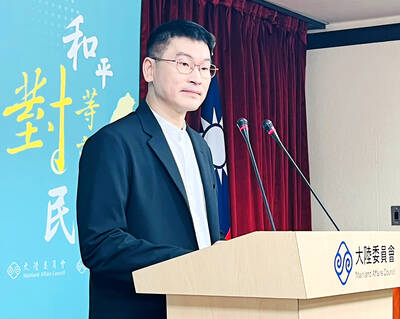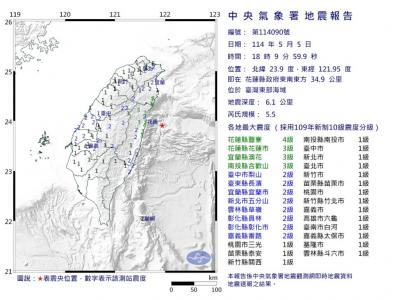South Korean Sara Choi wasn't planning to stay in Taiwan when she came to study Mandarin years ago, but her love for cats and frustration about the treatment of stray cats here eventually led her to settle down in Taipei and launch a campaign to help them.
At first she took in stray cats she found in her neighborhood, some of which had never lived with humans.
Eventually, she came upon the idea of founding the Taipei Feral Cat Protection Association last year and was happy when the Taipei City Government recently started handling the stray cat issue through the Trap-Neuter-Release (TNR) method.
TNR, which has been promoted as a humane alternative to euthanasia for managing and reducing stray cat populations in other countries, was introduced to Taiwan a couple of years ago by animal rights groups, and the city government initiated a trial TNR program last year in Da-an District with the help of Meetpets.com, a Web site dedicated to building a network for helping stray animals.
Instead of capturing stray cats and impounding them, the city government now traps and neuters them and returns them to where they were found.
Yen I-feng (
After a successful trial at Ching-an and Hsinlung boroughs in Daan District last year, the city government is expanding the experiment to six more boroughs in Wenshan, Daan, Lungyuan and Shilin districts this year with a goal of neutering 200 stray cats.
More than 12,500 stray cats currently roam the streets of Taipei City, and the number exceeds the estimated 4,000 stray dogs on the city's streets, according to the institute.
The boroughs chosen by the institute suffered from serious stray cat problems, Yen said.
"The TNR approach has proven effective for controlling the number of stray cats successfully. Stray cats pose no threat to the general public. In fact, they can benefit a neighborhood by decreasing the number of rats," he added.
Although many residents have been cooperating with the TNR method, Yen said that many borough chiefs had declined to join the trial project and attributed this to the idea being a new concept.
With a budget of NT$950,000 this year for the TNR project, the city government will focus its efforts on training volunteers, informing residents about the program and inviting veterans to join, Yen said.
"Most importantly, we don't want our good motives to inadvertently upset people. We need to educate volunteers to feed stray cats with only cat food and clean up, so that residents can tolerate stray cats in their neighborhoods," he added.
While agreeing to cooperate with the city government on the TNR project, borough chief of Hsinchang Borough Chang Hsiao-yuan (
It would be easier to promote the TNR method if the city government provided some subsidies for volunteers to encourage their hard work, Chang said.
Choi, whose association has neutered hundreds of cats and aims at finding homes for part of them, lauded the city government for adopting the approach, noting that the TNR method had become an international trend.
"The TNR concept is a humane method to control the number of stray cats while respecting their lives. People in Taiwan tend to either spoil their pets or else hate animals. They should learn that the best way to treat animals is to respect them and live with them peacefully," she said.
While continuing to expand the TNR project, Yen said the institute was planning to adopt the approach to solve the stray dog issue.
Because stray dogs are more likely to attack people after being released, Yen said the institute might initiate a TNR trial involving training dogs as neighborhood watch dogs and releasing them in closed communities first.

An essay competition jointly organized by a local writing society and a publisher affiliated with the Chinese Communist Party (CCP) might have contravened the Act Governing Relations Between the People of the Taiwan Area and the Mainland Area (臺灣地區與大陸地區人民關係條例), the Mainland Affairs Council (MAC) said on Thursday. “In this case, the partner organization is clearly an agency under the CCP’s Fujian Provincial Committee,” MAC Deputy Minister and spokesperson Liang Wen-chieh (梁文傑) said at a news briefing in Taipei. “It also involves bringing Taiwanese students to China with all-expenses-paid arrangements to attend award ceremonies and camps,” Liang said. Those two “characteristics” are typically sufficient

A magnitude 5.9 earthquake that struck about 33km off the coast of Hualien City was the "main shock" in a series of quakes in the area, with aftershocks expected over the next three days, the Central Weather Administration (CWA) said yesterday. Prior to the magnitude 5.9 quake shaking most of Taiwan at 6:53pm yesterday, six other earthquakes stronger than a magnitude of 4, starting with a magnitude 5.5 quake at 6:09pm, occurred in the area. CWA Seismological Center Director Wu Chien-fu (吳健富) confirmed that the quakes were all part of the same series and that the magnitude 5.5 temblor was

The brilliant blue waters, thick foliage and bucolic atmosphere on this seemingly idyllic archipelago deep in the Pacific Ocean belie the key role it now plays in a titanic geopolitical struggle. Palau is again on the front line as China, and the US and its allies prepare their forces in an intensifying contest for control over the Asia-Pacific region. The democratic nation of just 17,000 people hosts US-controlled airstrips and soon-to-be-completed radar installations that the US military describes as “critical” to monitoring vast swathes of water and airspace. It is also a key piece of the second island chain, a string of

The Central Weather Administration has issued a heat alert for southeastern Taiwan, warning of temperatures as high as 36°C today, while alerting some coastal areas of strong winds later in the day. Kaohsiung’s Neimen District (內門) and Pingtung County’s Neipu Township (內埔) are under an orange heat alert, which warns of temperatures as high as 36°C for three consecutive days, the CWA said, citing southwest winds. The heat would also extend to Tainan’s Nansi (楠西) and Yujing (玉井) districts, as well as Pingtung’s Gaoshu (高樹), Yanpu (鹽埔) and Majia (瑪家) townships, it said, forecasting highs of up to 36°C in those areas